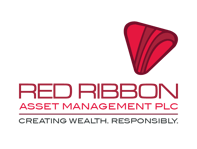A Better Way to Build…Sustainable Hospitality is Closer than you think
Let’s try a short thought experiment…imagine Sustainability is a stage performance or, perhaps, a streamed show on Netflix: delivered neatly in two or three chunks, each divided into intervals or (perhaps less enjoyably) advert breaks. If you leave after the first interval, you haven’t seen Hamlet or Succession either if you turn off after another round of adverts. Sure, you’ll know what some of it looks like, and you might even try to guess what comes next, but you’ll still be thinking and never really know. That’s what on-the-ground Sustainability looks like, too…the impact outcomes arrive in more or less neatly parcelled stages, and it’s never enough to focus on any one (or two) of them on their own.
For example, someone who’s just bought a new electric car: he (or she) will drive it around for a while without producing any carbon emissions (so a big sustainability tick there), but that’s only Act 2.
In Act 1, when the car was manufactured, the production process produced 70% more emissions than an equivalent petrol-driven car (according to Volvo), meaning the electric car will have to be driven for nine years emission-free to make up the difference (www.thisismoney.co.uk): so no sustainability tick there at all. And if we spool forward to Act 2, Scene 2, our hypothetical driver now has to plug the car in to charge the battery…so where do you think the power comes from for that? Increasingly from sustainable sources, but overwhelmingly from traditional power stations. So Scene 2 gets a sustainability question mark rather than a tick. And when the electric car finally reaches the end of its useful life, let’s call that Scene 3, the disposal emissions are likely to be way higher than for a “conventional” vehicle, not least because of all the rare metals used to make up its battery…
You get the message…you must look at the whole picture and stay for the entire show.
Green Hospitality in Three Acts
That applies just as much to green hospitality, where far too often “green” just means not replacing the soap in the bathroom or using the same towel twice: and that’s never going to be enough to address the increasingly complex environmental demands facing our precious planet.
Added to this, the old Hotel itself was probably built by dinosaur construction companies: braced and bolted together with a cyclopedia structure of bricks, steel, and concrete that not only created unacceptably high carbon emissions when they were installed (think of all those smoke-belching trucks bringing the materials to the site), but they’ll do it all again when the Hotel comes to be demolished, after a useful life that can be as short as twenty years. That’s why these outmoded technologies currently make construction the biggest waste polluter on the planet…bar none.
In short, Hotel developments and operating systems have consistently given the hospitality sector a thumbs down on sustainability over all three Acts. Even the electric car got a bit of one…
That’s something Phoenix Green Hotel Fund (www.redribbon.gi/phoenix-green-hotel) has been working hard to fix.
A Better Way to Build…A Better Way to Work
During the Hotel’s construction phase, Phoenix Green Hotels make extensive use of Plastic Form-work as a temporary mold to maintain the shape and stability of the final pour: replacing the traditional wooden shuttering that has historically made up between 40% to 60% of all resource (and cost) elements on an old fashioned construction project. And that matters because, unlike wooden form-work, its plastic variant (which comes in prefabricated, interlocking panels) is reusable, durable and low maintenance: industry analysts calculate that it can be re-used up to a hundred times for future projects, in stark contrast to spent wooden form-work which is usually destined, broken and battered, to be buried on a landfill site: and that’s certainly not good for the environment.
Even the concrete formulation used by Phoenix is better suited for the demands of a greener age: it incorporates Ground Granulated Blast Furnace Slag (GGBS), that acts as a hydraulic binder for the mix, strengthening and improving the concrete’s overall durability but also significantly reducing heat (and carbon) emissions. That also matters because GGBS is a by-product of steel production, and its use significantly enhances the project's overall sustainability.
And when it comes to operating systems before the Hotel itself is finally completed, Phoenix will incorporate state-of-the-art Building Management Systems (BMS) from the ground up: modern systems that sustainably regulate the Hotel’s electrical and mechanical equipment to prevent energy wastage (through a series of malfunction alarms), with a closely calibrated focus on occupancy schedules: because an unoccupied room doesn’t require the same energy and water variables.
These are truly intelligent, future-proof buildings, with Protective Circuit Modules (PCM’s) added into moderate voltages and currents…and that’s good for the environment too.
Invest in Red Ribbon Asset Management

Red Ribbon Asset Management (www.redribbon.co) aims to harness the full potential of fast evolving and emerging technologies to meet the needs of global communities as part of a circular economy, fully recognising the compelling demands of planet people and profit.

.jpg)


.jpg?width=150&height=150&name=abstract-city-building-shadows%20(1).jpg)
%20(1).jpg)
.jpg)

Leave a Reply